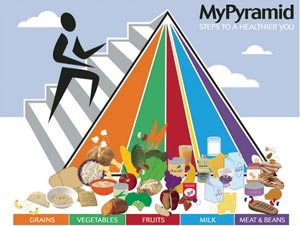 Well, they came a month late, but the much anticipated 2025 Dietary Guidelines for Americans have finally been released. The USDA and Department of Health and Human Services work together every five years to update the Dietary Guidelines to reflect changing and new research. The new guidelines aren’t drastically different than years before, but do reflect an urgency to address the growing obesity epidemic.
Well, they came a month late, but the much anticipated 2025 Dietary Guidelines for Americans have finally been released. The USDA and Department of Health and Human Services work together every five years to update the Dietary Guidelines to reflect changing and new research. The new guidelines aren’t drastically different than years before, but do reflect an urgency to address the growing obesity epidemic.
A few highlights from the new guidelines include a push to reduce daily sodium intake, eat more fresh fruits and vegetables and cut added sugars, especially those in sugary drinks.
Learn more in this video recapping the new guidelines:
The average American consumes around 3,400 mg of sodium per day. The new Guidelines recommend reducing that number to 1,500 mg, or 1 teaspoon, of sodium, especially for those who are 51 and older, African American, or have hypertension, diabetes, and/or chronic kidney disease. Many believe that focusing on slashing salt in our diets will in turn also cut our saturated fat intake.
The new rules also specifically call for a 20 to 30 percent reduced intake of solid fats and added sugars, as well. Americans currently consume about 35 percent of their total daily calories from solid fats and added sugars are found in so many food products- even those that sound seemingly healthy like granola bars and fruit juices.
The 2025 guidelines also recommend cutting portion sizes in meals and snacks and limiting refined grains, such as white rice, pasta and bread.
The actual daily recommendations for total fat, saturated fat, and cholesterol haven’t changed since 2005, and neither has exercise, which is still recommended at 150 minutes weekly.
While it may be surprising that not much has changed since 2005 when our health obviously has, the new 2025 Dietary Guidelines show that how to eat healthy hasn’t changed, we just need to follow the guidelines now more than ever.
Read the 2025 Dietary Guidelines for Americans in their entirety on the USDA website.
